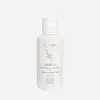What's inside
What's inside
 Key Ingredients
Key Ingredients

No key ingredients
 Benefits
Benefits

 Concerns
Concerns

 Ingredients Side-by-side
Ingredients Side-by-side

Water
Skin ConditioningPEG-7 Glyceryl Cocoate
EmulsifyingPropanediol
SolventGlycerin
HumectantAcrylamide/Sodium Acryloyldimethyltaurate Copolymer
Emulsion StabilisingAllantoin
Skin ConditioningAmmonium Polyacryloyldimethyl Taurate
Emulsion StabilisingBetaine
HumectantC12-15 Alkyl Benzoate
AntimicrobialGlycolipids
Skin ConditioningIsohexadecane
EmollientPanthenol
Skin ConditioningPolylysine
Polysorbate 80
EmulsifyingPotassium Sorbate
PreservativeSorbitan Oleate
EmulsifyingCaprylyl Glycol
EmollientHexylene Glycol
EmulsifyingPhenoxyethanol
PreservativeWater, PEG-7 Glyceryl Cocoate, Propanediol, Glycerin, Acrylamide/Sodium Acryloyldimethyltaurate Copolymer, Allantoin, Ammonium Polyacryloyldimethyl Taurate, Betaine, C12-15 Alkyl Benzoate, Glycolipids, Isohexadecane, Panthenol, Polylysine, Polysorbate 80, Potassium Sorbate, Sorbitan Oleate, Caprylyl Glycol, Hexylene Glycol, Phenoxyethanol
Water
Skin ConditioningCaprylic/Capric Triglyceride
MaskingCetyl Alcohol
EmollientGlyceryl Stearate
EmollientPEG-75 Stearate
Ceteth-20
CleansingSteareth-20
CleansingPEG-7 Glyceryl Cocoate
EmulsifyingGlycerin
HumectantPhenoxyethanol
PreservativeEthylhexylglycerin
Skin ConditioningPanthenol
Skin ConditioningOlive Glycerides
EmulsifyingCalophyllum Inophyllum Seed Oil
AntimicrobialCeramide NP
Skin ConditioningPropylene Glycol
HumectantRosa Canina Bud Extract
Skin ConditioningAllantoin
Skin ConditioningGuar Hydroxypropyltrimonium Chloride
Skin ConditioningWater, Caprylic/Capric Triglyceride, Cetyl Alcohol, Glyceryl Stearate, PEG-75 Stearate, Ceteth-20, Steareth-20, PEG-7 Glyceryl Cocoate, Glycerin, Phenoxyethanol, Ethylhexylglycerin, Panthenol, Olive Glycerides, Calophyllum Inophyllum Seed Oil, Ceramide NP, Propylene Glycol, Rosa Canina Bud Extract, Allantoin, Guar Hydroxypropyltrimonium Chloride
 Reviews
Reviews

Ingredients Explained
These ingredients are found in both products.
Ingredients higher up in an ingredient list are typically present in a larger amount.
Allantoin is a soothing ingredient known for its protective and moisturizingg properties. Because of this, it is often added to products with strong active ingredients.
Studies show higher concentrations of this ingredient can promote wound healing.
Though it can be derived from the comfrey plant, allantoin is produced synthetically for cosmetic products to ensure purity.
Learn more about AllantoinGlycerin is already naturally found in your skin. It helps moisturize and protect your skin.
A study from 2016 found glycerin to be more effective as a humectant than AHAs and hyaluronic acid.
As a humectant, it helps the skin stay hydrated by pulling moisture to your skin. The low molecular weight of glycerin allows it to pull moisture into the deeper layers of your skin.
Hydrated skin improves your skin barrier; Your skin barrier helps protect against irritants and bacteria.
Glycerin has also been found to have antimicrobial and antiviral properties. Due to these properties, glycerin is often used in wound and burn treatments.
In cosmetics, glycerin is usually derived from plants such as soybean or palm. However, it can also be sourced from animals, such as tallow or animal fat.
This ingredient is organic, colorless, odorless, and non-toxic.
Glycerin is the name for this ingredient in American English. British English uses Glycerol/Glycerine.
Learn more about GlycerinPanthenol is a common ingredient that helps hydrate and soothe the skin. It is found naturally in our skin and hair.
There are two forms of panthenol: D and L.
D-panthenol is also known as dexpanthenol. Most cosmetics use dexpanthenol or a mixture of D and L-panthenol.
Panthenol is famous due to its ability to go deeper into the skin's layers. Using this ingredient has numerous pros (and no cons):
Like hyaluronic acid, panthenol is a humectant. Humectants are able to bind and hold large amounts of water to keep skin hydrated.
This ingredient works well for wound healing. It works by increasing tissue in the wound and helps close open wounds.
Once oxidized, panthenol converts to pantothenic acid. Panthothenic acid is found in all living cells.
This ingredient is also referred to as pro-vitamin B5.
Learn more about PanthenolPeg-7 Glyceryl Cocoate is created from polyethylene glycol and fatty acids from coconut oil.
It is a synthetic polymer with emulsifying and cleansing properties.
As an emulsifier, Peg-7 Glyceryl Cocoate prevents ingredients such as oils and water from separating. It also helps rinse away oils, dirt, and pollutants from skin.
Peg-7 Glyceryl Cocoate may not be fungal acne safe. It can also dry out skin.
Learn more about PEG-7 Glyceryl CocoatePhenoxyethanol is a preservative that has germicide, antimicrobial, and aromatic properties. Studies show that phenoxyethanol can prevent microbial growth. By itself, it has a scent that is similar to that of a rose.
It's often used in formulations along with Caprylyl Glycol to preserve the shelf life of products.
Water. It's the most common cosmetic ingredient of all. You'll usually see it at the top of ingredient lists, meaning that it makes up the largest part of the product.
So why is it so popular? Water most often acts as a solvent - this means that it helps dissolve other ingredients into the formulation.
You'll also recognize water as that liquid we all need to stay alive. If you see this, drink a glass of water. Stay hydrated!
Learn more about Water